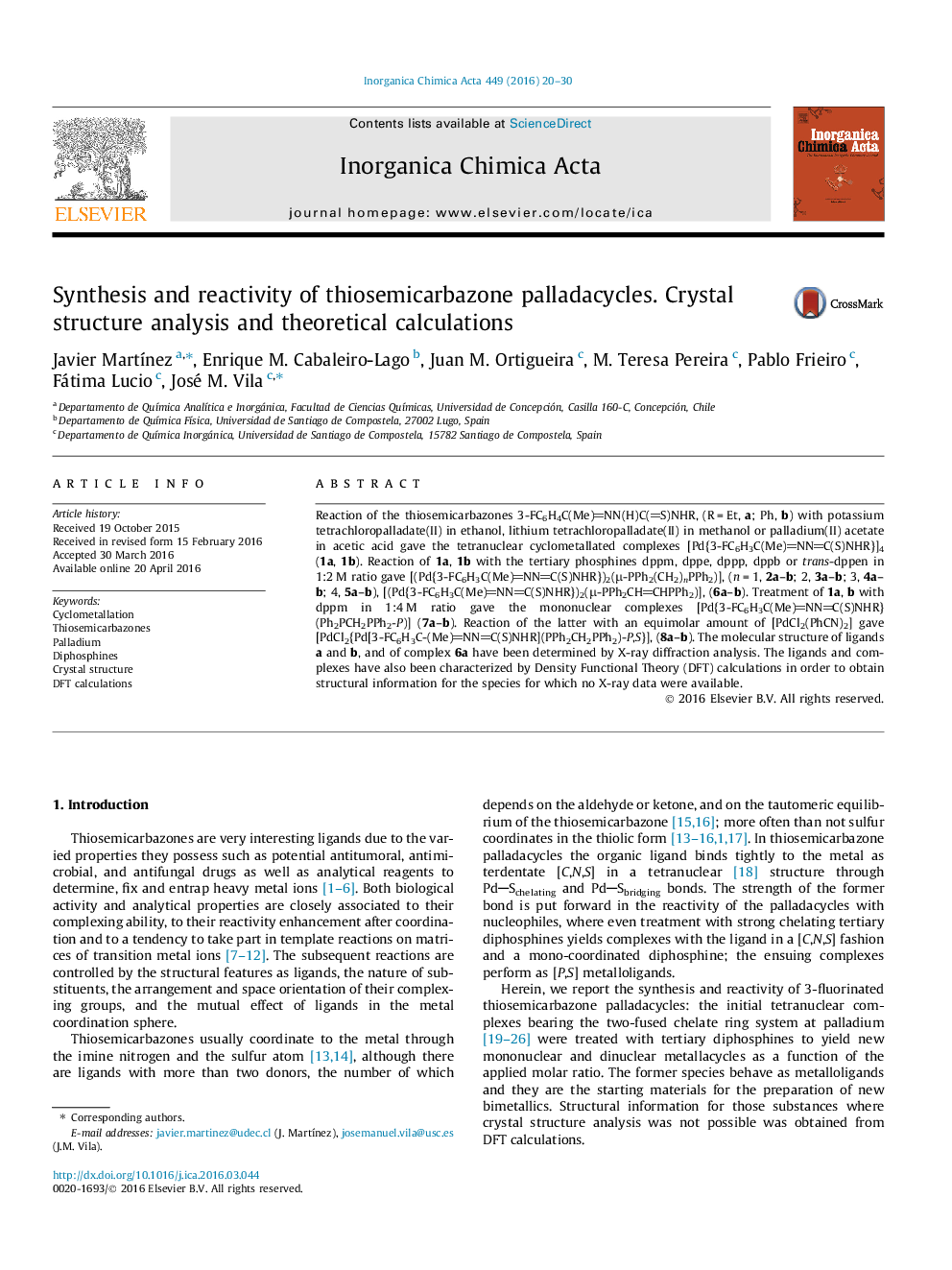| Article ID | Journal | Published Year | Pages | File Type |
|---|---|---|---|---|
| 1307907 | Inorganica Chimica Acta | 2016 | 11 Pages |
•Di- and tetranuclear palladium(II) complexes with diphosphines.•Detailed discussion of DFT calculations on the tetranuclear and dinuclear moieties.•X-ray crystallographic study of a thiosemicarbazone dinuclear palladacycle.
Reaction of the thiosemicarbazones 3-FC6H4C(Me)NN(H)C(S)NHR, (R = Et, a; Ph, b) with potassium tetrachloropalladate(II) in ethanol, lithium tetrachloropalladate(II) in methanol or palladium(II) acetate in acetic acid gave the tetranuclear cyclometallated complexes [Pd{3-FC6H3C(Me)NNC(S)NHR}]4 (1a, 1b). Reaction of 1a, 1b with the tertiary phosphines dppm, dppe, dppp, dppb or trans-dppen in 1:2 M ratio gave [(Pd{3-FC6H3C(Me)NNC(S)NHR})2(μ-PPh2(CH2)nPPh2)], (n = 1, 2a–b; 2, 3a–b; 3, 4a–b; 4, 5a–b), [(Pd{3-FC6H3C(Me)NNC(S)NHR})2(μ-PPh2CHCHPPh2)], (6a–b). Treatment of 1a, b with dppm in 1:4 M ratio gave the mononuclear complexes [Pd{3-FC6H3C(Me)NNC(S)NHR}(Ph2PCH2PPh2-P)] (7a–b). Reaction of the latter with an equimolar amount of [PdCl2(PhCN)2] gave [PdCl2{Pd[3-FC6H3C-(Me)NNC(S)NHR](PPh2CH2PPh2)-P,S}], (8a–b). The molecular structure of ligands a and b, and of complex 6a have been determined by X-ray diffraction analysis. The ligands and complexes have also been characterized by Density Functional Theory (DFT) calculations in order to obtain structural information for the species for which no X-ray data were available.
Graphical abstractSpectroscopic study, crystal and molecular analysis, as well as DFT calculation data are thoroughly reviewed for mono-, di- and tetranuclear thiosemicarbazone palladacycles.Figure optionsDownload full-size imageDownload as PowerPoint slide
